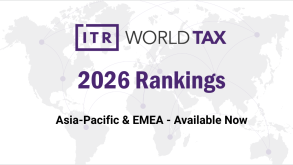On December 18 2020, the OECD released the ‘Guidance on the transfer pricing implications of the COVID-19 pandemic’ (guidance). It is one of the most practical reports provided by the OECD on transfer pricing (TP) issues and conveys a wider consensus given that many countries found themselves in very similar situations at the same point in time.
The guidance stressed that the intention is not to replace or amend what is already included in the OECD Transfer Pricing Guidelines (OECD TPG), but rather to illustrate cases on how taxpayers and tax authorities should review the application of the ‘good old’ arm’s-length principle (ALP) in the context of the COVID-19 pandemic.
One of the most critical questions on the table of multinational enterprises (MNEs) during the COVID-19 pandemic has been: ‘can entities operating under limited risk arrangements incur losses?’ The prompt input from the OECD on this issue has been highly appreciated from the business community.
At the heart of the OECD response, the concepts of ‘control over risks’ (CoR) coupled with the concept of ‘options realistically available’ (ORA) can be found. Certainly not a new concept in TP, CoR is already prominent in chapter one of the OECD TPG, and ORA had gained increased notoriety by playing a key role in the OECD report on financial transactions of February 2020. It should be stressed that these concepts are increasingly becoming some of the core elements of TP analysis.
The guidance has made clear that reacting correctly to this issue, i.e. deciding whether or not to share losses with the limited risk entity, requires an analytical review following the CoR and ORA concepts, whereby consistency with long-term TP policy cannot be overlooked.
Two months following publication of the guidance, this article aims at assessing, based on the authors’ experience, some aspects of the guidance and, more in general, of the COVID-19 pandemic that could have a long-term impact on TP issues similar to a business restructuring process.
Control over risks
In transfer pricing, it is a widely known concept that reward follows risks. The analysis of risks and the functional control of risks is a critical element and MNEs will have to identify all economically significant risks per transaction and determine which party of each transaction bears these risks, i.e. which party makes the decisions to take on, lay off, and mitigate such risks.
In centralised business, the outcome of a CoR characterises the transacting entities as ‘entrepreneurial entity’ or ‘risk-bearing entity’ vs ‘routine’ or ‘limited risk entity’. The entrepreneurial entity has both the management and the financial capacity to bear risk and should receive the residual profit or bear the residual losses related to the relevant intra-group transactions, whereas the routine entity (exposed to less risks) earns a more stable return. The MNEs would typically aim to set the inter-company pricing of the routine entity through the transactional net margin method (TNMM). In applying the TNMM, the net profit of the routine or limited risk entity is expressed, as the appropriate profit margin over costs, sales, or assets employed.
Benchmarking studies are performed using public databases to identify the profit margins of independent companies with a comparable functionality of similar companies based on certain quantitative and qualitative search criteria. A statistical interquartile range (IQR) is applied to the financial results of comparable companies to obtain the arm’s-length range of profit margins.
Many consumer and luxury goods MNEs operate a centralised business model whereby the manufacturing entities, and country sales and retail entities, characterised as routine or limited risk entities, have up to now been earning a stable margin under the TNMM.
This concept of risks and control over risks for limited risk entities may warrant a reassessment.
The COVID-19 pandemic, which constitutes a hazard risk, has led to unusual outcomes of other risks for some taxpayers, including:
Marketplace risk – as demand for some products and services has collapsed;
Operational risk – as the pandemic has disrupted supply chains and inhibited production; and
Financial risks – as borrowing costs for some industries have spiked and customers have delayed or defaulted on payments.
Hazard risk showed its wider effects and proved that up to now it has been underestimated along with the derived risks. The COVID-19 pandemic has proven that for some hard-hit industries a reassessment of its potential impact along the value chain should be conducted. Even luxury brands, centralised by definition and accustomed to double-digit earnings before interest and taxes (EBIT), were caught off guard and forced to close their local retail shops and deny customers of their shopping experience.
Are those local retail shops (structured as limited risk distributors) with no sales due to government restrictions, or those manufacturing entities (structured as limited risk manufacturers) experiencing production disruption and supply shortage, ever going to be the same? In TP words: now that we know that ‘no risk’ does not exist, can we continue remunerating them in the same way?
Similarly, to a business restructuring case, where the correct delineation of the transaction requires an analysis of the ‘before’ and ‘after’ restructuring, when assessing sustainability of a TP policy, the relevance of a risk (i.e. marketplace, operational and financial) and its respective CoR analysis should consider the before and after impact of COVID-19 pandemic.
Should the CoR analysis, for example, conclude that a limited risk distributor (LRD), with no sales, has been left responsible to cover local operating costs, thus incurring losses – sufficient support needs to be provided that the risk crystalised was to be borne by the LRD. Additionally, the relevance of such risk and the control over such risk would need to be reassessed against the future pricing.
MNEs should therefore prepare to defend future pricing to local tax authorities that will consider the delineation of the transaction in the COVID-19 pandemic period and expect consistency with future/long-term positions.
Up to date limited risk entities have been at the centre of numerous tax audits, whereby the local authorities fought either to prove that a limited risk distributor is not allowed to perform losses, or to challenge the limited risk nature of the local operations, thus arguing that a higher profit should be reported locally. These types of challenges will continue, and an additional layer of complexity might be added since taxpayers will be asked to demonstrate consistency between their TP policy pre- and post- the COVID-19 pandemic.
Options realistically available
In determining whether the routine or limited risk entities can incur losses, the ORA should be analysed. The background of this complementary step is that the specific business circumstances of one of the parties should not be used to dictate an outcome contrary to the realistically available options of the other party. The premise is that a particular transaction would only be entered into by both parties if no other, more favourable option exists.
The analysis of realistically available options does not have the aim to list every available hypothetical option. Rather, only those options that are clearly more attractive should be considered and the reasons why these options were not chosen should be documented. It may be the case that – in a related party transaction – a more favourable option is not chosen and the reasons for not proceeding with this option do not make a convincing case. Then the conclusion would be that the transaction itself is not in accordance with the arm’s-length standard, as third parties would have presumably acted differently which would have an impact on the pricing of the underlying transactions.
The decision whether the entrepreneurial entity should offer financial support to the limited risk entity requires an analytical review of the ORAs.
The CoR analysis might have concluded that the limited risk entity should bear the crystalised risk. However, the ORA available to the parties could show that in comparable situations, unrelated enterprises may opt to renegotiate a contract to support the financial survival of any of the transactional counterparties given the potential costs or business disruptions of enforcing the contractual obligations, or in view of anticipated increased future business with the counterparty.
The analysis of the ORA to the entrepreneurial entity may in fact indicate that not assisting the limited risk entity and letting it absorb its losses might lead to a larger damage for the entrepreneurial entity.
Analysing the long-run effects becomes of paramount importance.
Determining whether a renegotiation of a commercial arrangement represents the best interests of the parties to a transaction requires careful consideration of their ORA, and the long-run effects on the profit potential of the parties.
One could expect a more likely than not challenge from tax authorities of entrepreneurial entity countries that would, hence, want to review the effective benefit of having rescued the limited risk entity. The decision matrix followed by the entrepreneurial entity should be documented alongside the estimated financial analysis to prove the convenience of the choice undertaken vs the other potential option available, e.g. document the opportunity cost of keeping the channel alive.
Ex post alignment of the TNMM results
As mentioned above, in presence of limited risk entities, MNEs would typically aim to set the inter-company pricing of the routine entity through the TNMM. When reviewing the consistency between the pricing during and post- the COVID-19 pandemic, the following considerations should be made:
The importance of the search strategy in a TNMM analysis increases. It will be crucial to update the benchmarking study to establish what has been the reaction of comparable companies post- COVID-19 pandemic, and relaxation of some search criteria will no longer be possible. Industry and geographic comparability will be key, whilst multi-year analysis may no longer be appropriate, with a distinction required between pre- COVID-19 financials, COVID-19 financials and post- COVID-19 ones;
Where used and accepted, assess whether year-end adjustments to a range of values rather than to a specific point in the range would better reflect the role of the limited risk entity. Even excluding year-end adjustments to reflect more volatility of the results should be assessed; and
Potential internal comparables, often rejected too soon, should be reconsidered when they exist and used at least for corroborative analysis. Although, the OECD TPG do not require either the tax examiner nor taxpayer to perform analyses under more than one method, in the experience of the authors, the sustainability of a TP position is highly increased when using various methods used in conjunction.
Ex post alignment of the legal framework
The legal framework should be reviewed to ensure that potential legal gaps identified during the crisis can be closed. The pandemic has shown that the analysis of the inter-company contracts is the key starting point to determine whether – at arm’s-length – a party would be able to invoke a force majeure clause or a hardship clause. The latter, for example, might offer alternative terms in case of unforeseeable events.
For example, by allowing the renegotiation of contracts in order to ensure future compensation to the routine entities that contributed during the downturn period. More specifically, in the case where economic conditions have improved, the limited risk entity could be paid a higher than routine margin to compensate for its contribution in the crisis period.
Taking a new direction
The guidance provides practical, consensus-driven support on how taxpayers and tax authorities should ensure applicability of the ALP during the COVID-19 outbreak. MNEs are encouraged to perform a detailed analysis of the pandemic’s impact on current group TP policies, and to keep a thorough documentation of it. In the meantime, the concept of TP analysis is leaning more and more towards the CoR and ORA concepts – both of which harness the ability to make a clearer connection between profit allocation and locations, and are centred around tangible risks and options. These factors combined strengthen the accuracy of a TP outcome.
The post-pandemic ‘new normal’ will likely have long-term ramifications, and hence it is prudent to expect that TP policy should follow suit, and the guidance certainly feels like there is a new direction being taken. To avoid ensuing tax disputes on their business operations, MNEs are therefore recommended to review their TP systems while ensuring consistency between the COVID-19 pandemic period with future/long-term positions and when required, recalibrate them to consider future economic shocks.
Click here to read the 2021 TP Special Focus guide
Hendrik Blankenstein |
|
|---|---|

|
Counsel Tax Partner T: +41 44 215 77 54 E: hendrik.blankenstein@taxpartner.ch Hendrik Blankenstein is a counsel of Tax Partner in the Zurich office and leads its TP team. From 1989 to 1995, he was an international tax consultant at Big Four firms in both the US and the Netherlands, from 1996-2004 he worked as an in-house international tax and TP counsel at Nestlé’s HQ in Switzerland, and from 2005 to 2015 as a Swiss-based partner in globally operating TP boutique consultancy firms. Hendrik has been providing TP advice to Swiss and foreign multinational clients in a variety of industries, covering the design of TP systems, preparation of master file/local file documentation, negotiation and conclusion of unilateral/bilateral APAs, successful management of complex TP audits and setting up TP risk management frameworks. |
Caterina Colling Russo |
|
|---|---|

|
Senior advisor Tax Partner T: +41 44 215 77 56 E: caterina.collingrusso@taxpartner.ch Caterina Colling Russo is a senior advisor with Tax Partner, who has more than 15 years’ full-time experience in TP consulting. Before joining the firm in 2016, she previously held specialist TP positions within global international tax and TP firms. She has worked in Amsterdam, London and Rome. She is a TP advisor for listed and non-listed Swiss and international multinationals. She is a speaker at tax seminars and has published various articles and books on TP matters. Tax Partner AG, Taxand Switzerland, is focused on Swiss and international tax law and is recognised as an important independent tax boutique. With a team of approximately 50 tax lawyers, the firm advises multi-national and national corporate clients as well as individuals in all tax areas. In 2005, Tax Partner AG co-founded Taxand – the world's largest independent organisation of over 2,500 tax advisors from independent member firms in around 50 countries. |













